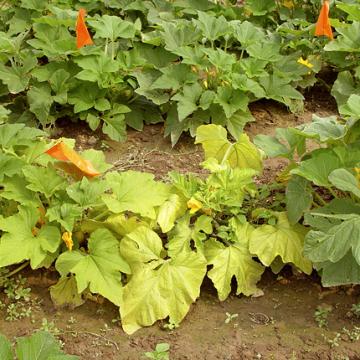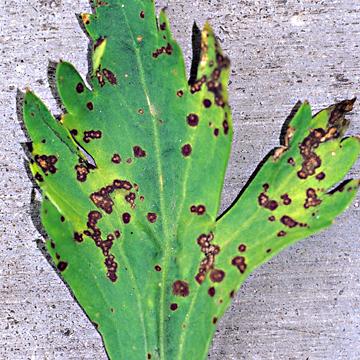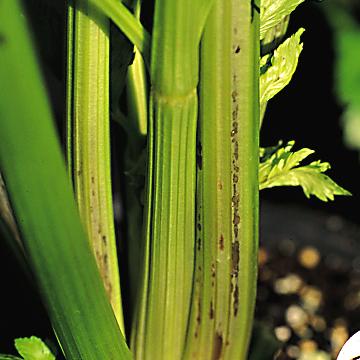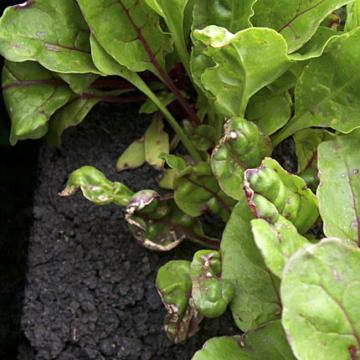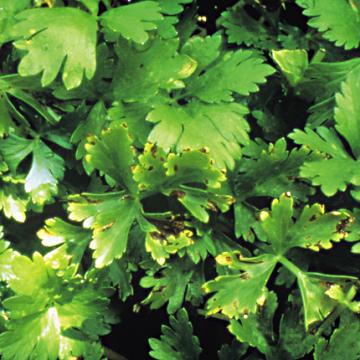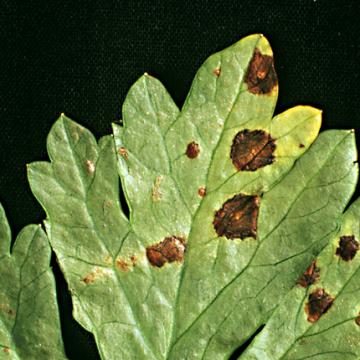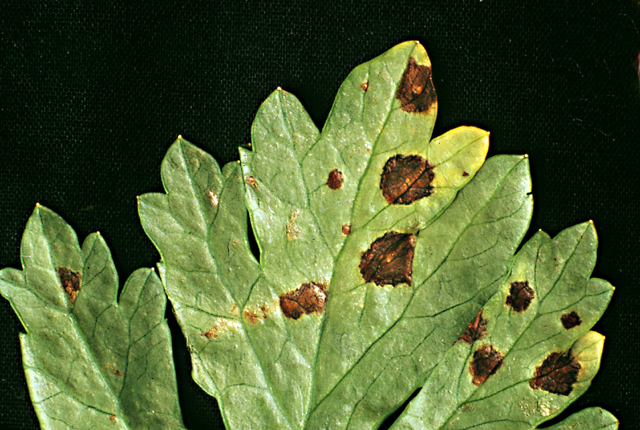DISEASE: Aster yellows
HOST: Squash
Diagnostic characteristics for the disease are yellowing of young leaves, proliferation of secondary shoots, and rigid erect habit. Leaves are misshapen and smaller than normal and have stiff, thick laminae.
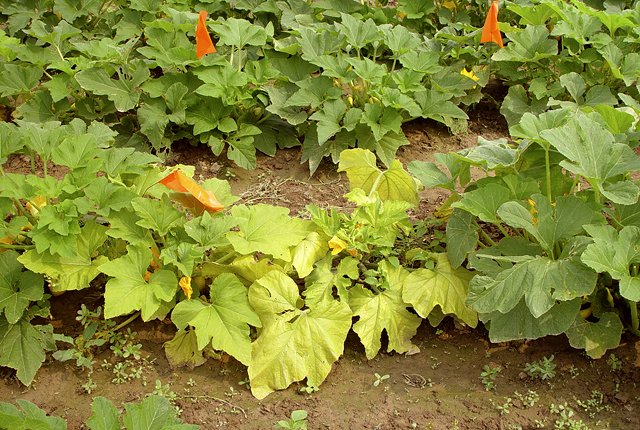
Aster yellows | Squash
DISEASE: Aster yellows
HOST: Squash (Cucurbita sp.)
PATHOGEN: 'Candidatus Phytoplasma asteris'
PATHOGEN SYNONYM: Phytoplasma Aster yellows group
SOURCE: S. Miller
DISEASE: Bacterial blight (Brown stem)
HOST: Celery
Lesions are necrotic and circular to angular. Some have yellowish halos. Older lesions become brown and dry.
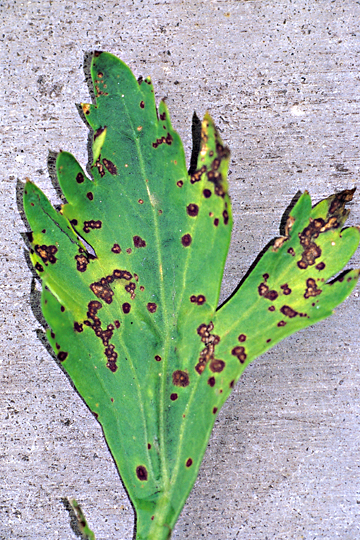
Bacterial blight (Brown stem) | Celery
DISEASE: Bacterial blight (Brown stem)
HOST: Celery (Apium graveolens)
PATHOGEN: Pseudomonas cichorii
SOURCE: R. Raid
DISEASE: Bacterial blight (Brown stem)
HOST: Celery
Ooze from lesion on celery leaf.
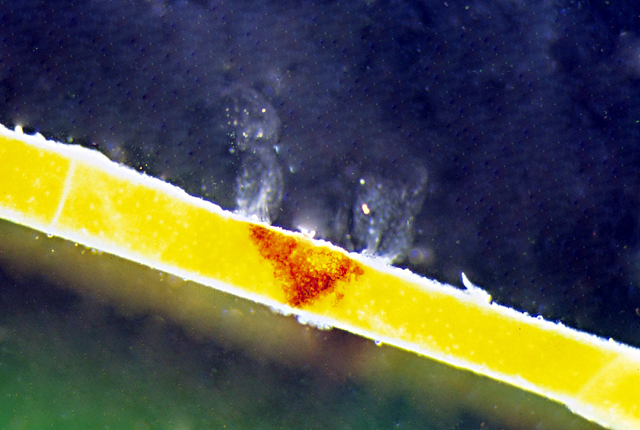
Bacterial blight (Brown stem) | Celery
DISEASE: Bacterial blight (Brown stem)
HOST: Celery (Apium graveolens)
PATHOGEN: Pseudomonas cichorii
SOURCE: R. Raid
DISEASE: Bacterial blight (Brown stem)
HOST: Celery
Characteristic brown discoloration of petioles, which is more evident on inside of petiole close to the crown. Parenchyma tissues are firm and brown.
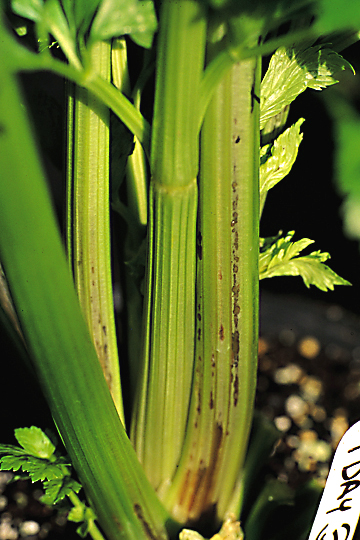
Bacterial blight (Brown stem) | Celery
DISEASE: Bacterial blight (Brown stem)
HOST: Celery (Apium graveolens)
PATHOGEN: Pseudomonas cichorii
SOURCE: K. Pernezny
DISEASE: Bacterial leaf spot (Blight)
HOST: Beet
Seedling blight stage of the disease.
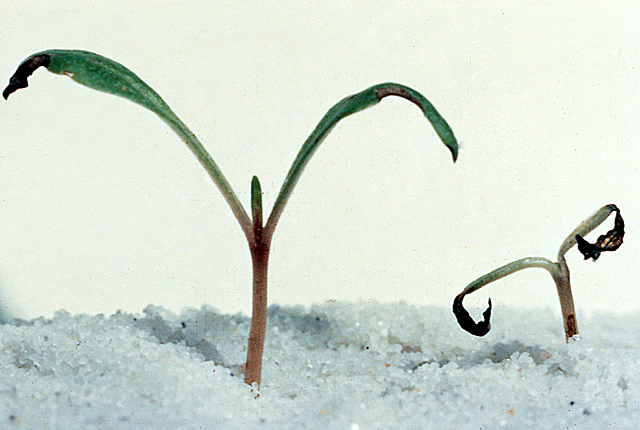
Bacterial leaf spot (Blight) | Beet
DISEASE: Bacterial leaf spot (Blight)
HOST: Beet (Beta vulgaris)
PATHOGEN: Pseudomonas syringae pv. aptata
PATHOGEN SYNONYM: Pseudomonas aptata
SOURCE: C. Schneider
DISEASE: Bacterial leaf spot (Blight)
HOST: Beet
Leaves with dark brown necrotic regions and streaks; two petioles also are infected.
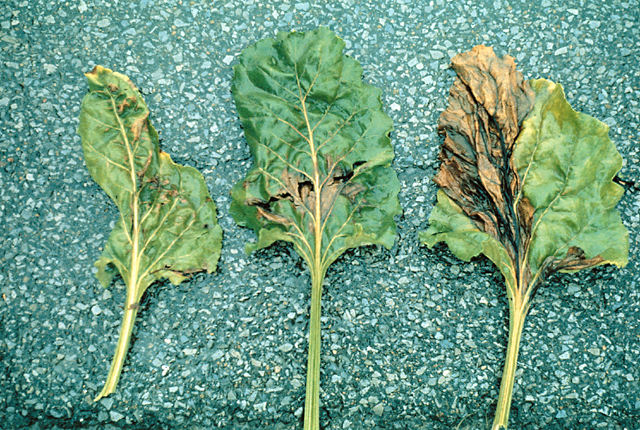
Bacterial leaf spot (Blight) | Beet
DISEASE: Bacterial leaf spot (Blight)
HOST: Beet (Beta vulgaris)
PATHOGEN: Pseudomonas syringae pv. syringae
SOURCE: C. Schneider
DISEASE: Bacterial leaf spot of beet
HOST: Beet
Beet leaves with spots and marginal necrosis.
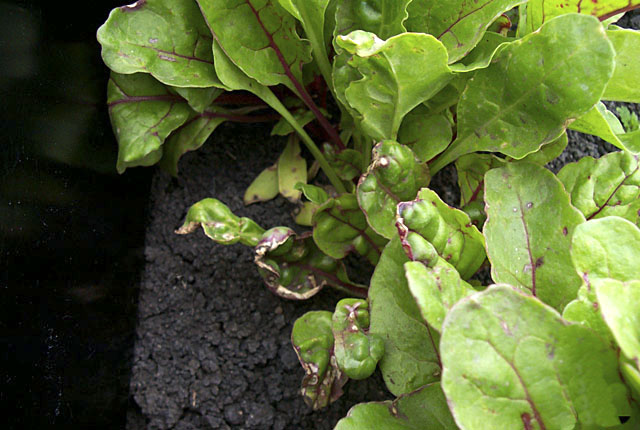
Bacterial leaf spot of beet | Beet
DISEASE: Bacterial leaf spot of beet
HOST: Beet (Beta vulgaris subsp. vulgaris)
PATHOGEN: Pseudomonas syringae pv. aptata
PATHOGEN SYNONYM: Pseudomonas aptata
SOURCE: P. Brown
DISEASE: Bacterial leaf spot
HOST: Celery
Leaves with typical symptoms of rusty brown lesions with greasy appearance.
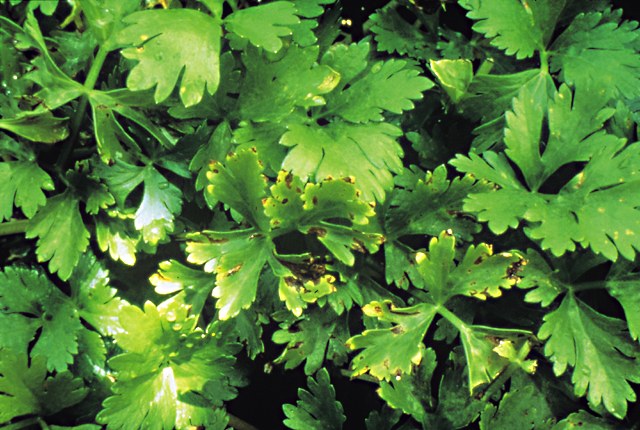
Bacterial leaf spot | Celery
DISEASE: Bacterial leaf spot
HOST: Celery (Apium graveolens)
PATHOGEN: Pseudomonas syringae pv. apii
SOURCE: R. Gilbertson


